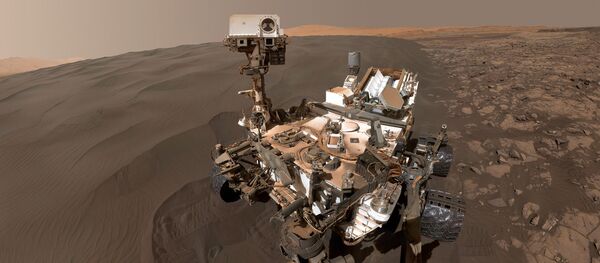The new technology is part of NASA's Spanwise Adaptive Wing project (SAW) at the Armstrong Flight Research Center in California. The project's goal is to use cutting-edge, lightweight material that allows the outer portions of aircraft wings to fold at optimal angles while in flight.
The ability to fold wings in the air has relied on heavy conventional motors and hydraulic systems in the past. The SAW project's aim is instead to fold wings in flight through a new, lightweight material called a shape memory alloy. The material, which is built into the actuator of the airplane, folds the outer portions of the wings without being cumbersome to the plane. In fact, such systems are 80 percent lighter than conventional hydraulic systems.
The shape memory alloy, developed by NASA with the help of Boeing, is controlled by temperature and uses thermal energy in tubes that act as actuators. When the alloy is heated, it triggers a twisting motion in the tubes, which subsequently activates the movement of the wing's outer portions.
The recent series of flight tests in California successfully folded the shape memory alloy wings between zero and 70 degrees while the aircraft was in flight.
"We wanted to see: can we move wings in flight, can we control them to any position we want to get aerodynamic benefits out of them, and could we do it with this new technology," said SAW co-principal investigator Othmane Benafan in a NASA press release last week. "Folding wings has been done in the past, but we wanted to prove the feasibility of doing this using shape memory alloy technology, which is compact, lightweight and can be positioned in convenient places on the aircraft."
The benefit of folding the wings on subsonic aircraft, such as commercial planes, includes increased controllability, which is likely to decrease dependency on heavy parts of the aircraft including the tail rudder. The result is a more fuel-efficient aircraft that can quickly adapt to various flight conditions, such as wind gusts, in real-time.
However, supersonic aircraft can also benefit from folding wings, most importantly to reduce drag.
"There's a lot of benefit in folding the wing tips downward to sort of ‘ride the wave' in supersonic flight, including reduced drag. This may result in more efficient supersonic flight," SAW principal investigator Matt Moholt said.
"Through this effort, we may be able to enable this element to the next generation of supersonic flight, to not only reduce drag but also increase performance, as you transition from subsonic to supersonic speeds. This is made possible using shape memory alloy."
"The performance of this new alloy that we developed between NASA and Boeing really showed outstanding performance," said Jim Mabe, technical fellow with Boeing Research and Technology. "From the time we started initial testing here at Boeing, up to the flight tests, the material behaved consistently stable and showed a superior performance to previous materials."
To test the innovative material, NASA also collaborated with Area I, a company that works on developing technologies that improve aircraft performance to design and build Prototype Technology-Evaluation Research Aircraft (PTERA), a remote-controlled flight research testbed that enables the evaluation of various technologies.
"PTERA was developed as a flying laboratory and was used in this flight series to host the SAW experiment," said Area-I CEO Nicholas Alley, who called the successful activation of the foldable winds in flight a "historic event."
The SAW test flights, which tested several maneuvers while heating and cooling the actuators, took place over two days.
More flight tests are planned for summer 2018, when NASA will test upward and downward wing folding in the same flight. The space agency hopes to implement the technology for testing on an F-18 jet in the near future.





